It is 10 p.m. at the University of Texas at Austin’s South Mall. The night is quiet, a stark contrast to just the day before when UT Austin became the latest battleground of the culture war on American college campuses. All over the country this spring, anti-Israel, pro-Hamas protesters set up squalid camps on well-manicured quads, blocking and storming buildings. Revolutionaries clad in Covid masks and the keffiyeh favored by terrorists the world over spent the semester hounding Jewish students in libraries, dorms and whatever other structures they could seize. They demanded that institutions cut ties with Israel, topped off with requiring criminal pardons and straight “A”s for themselves, lest their noble impulses hinder their career prospects.
UT Austin president Jay Hartzell, having witnessed such protest theater play out nationwide following the 10/7 Hamas attacks, was prepared when his pupils attempted to build their own encampment on April 23. With Hartzell’s blessing, campus police and Texas state troopers, clad in riot gear, cleared out protesters from the South Mall. This led to clashes as the students fought back and resisted arrest. It did not take long for people on social media to temporarily take their attention off the protest epicenter at Columbia and notice the chaos unfolding in Texas.
The next day, students and faculty staged a walkout to denounce what they claimed had been unfair treatment by the college and law enforcement. A small group of pro-Israel demonstrators stood off to one side, chanting, “Bring them home!” in reference to Hamas’s kidnapping victims, and “Am Yisrael Chai!” While the tension between the two groups was high, no major fighting broke out. Campus police watched the protest from the steps of the UT Tower.
Many anti-Israel protesters left the area once the scheduled protest was over, but a few dozen gathered back at the South Mall. They brought blankets, towels and art supplies to make signs. Snacks and water were placed beside the defaced George Washington statue. The only thing missing from previous demonstrations was tents: the university had warned activists that no one would be allowed to stay on the South Mall past 10 p.m.
As the afternoon wore on, protesters who had stayed on the lawn gathered to discuss what to do next. There were lots of ideas: protesting at the jail to show support for people still held from the day before! Having a potluck featuring traditional Palestinian food! Hosting musicians who play Palestinian music! And, of course, harassing President Hartzell at his home! The last suggestion spurred a lively debate as to whether it was worth the risk. Some said going off-campus increased the chance of facing an even harsher police response.
“You don’t even have to act like a crazy person… you know, it’s very alarming just to have people come to your house,” one pro-harassment protester said. Another pro-home-visit partisan encouraged the group not to deny themselves direct action out of fear of crackdowns from law enforcement.
The last item on the agenda was to decide what to do regarding the curfew. Two camps quickly formed: one group was understanding of those who were wary of arrest; the other called on potential defectors to hold the line, reasoning that a larger crowd would diminish the chances of arrest. A die-in on the South Mall got good reviews until it was pointed out that lying on the ground is not the most effective way to avoid arrest. Their priorities became clear: they wanted to hold the space as a continued act of defiance. And they didn’t want to be arrested.
Standing on the sidewalk next to the South Mall in the early evening of April 25, I could see a few campus police officers closer by UT Tower, but that was it as far as police presence. Around fifty people stayed on the grounds. They listened to musicians and settled for the snacks favored by potheads when Palestinian cuisine proved unobtainable on such short notice. By 10:15 it was clear that nothing was going to happen to the protesters. Emboldened by the empty curfew threats, protesters returned with their tents on Monday, April 29, leading to further clashes with police and at least seventy-nine arrests.
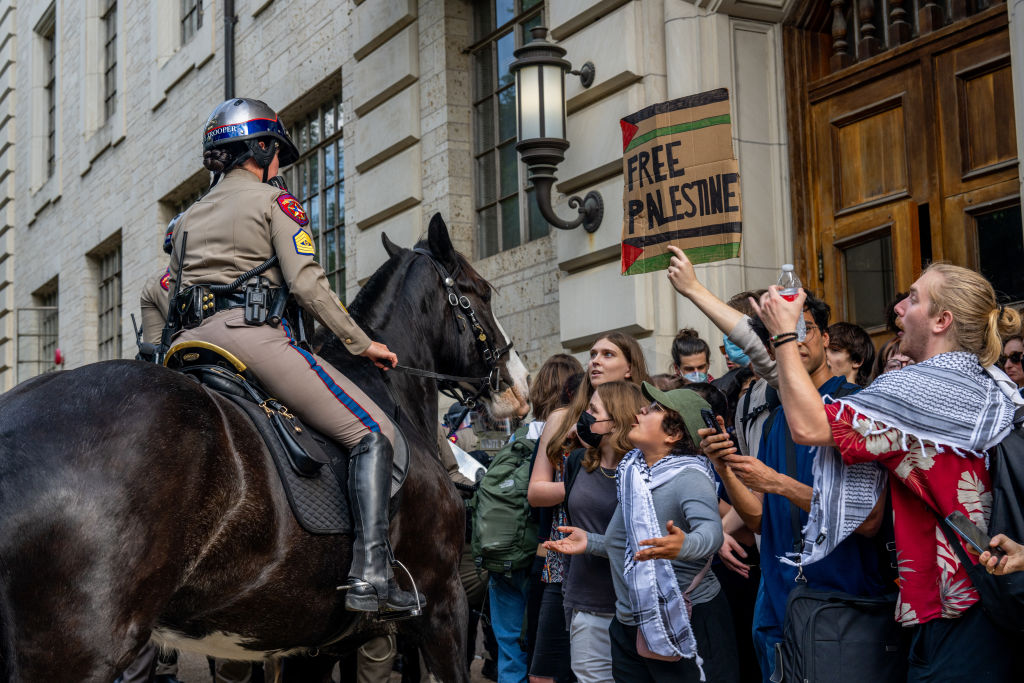
The university — nestled in the capital city of a red state — shows how many colleges are struggling to handle disruptive protests. The same scene is playing out nationwide as protesters take over a certain area or building, prompting a police response. Due to sheer numbers, protesters have largely prevailed in holding their ground or returning to reoccupy those same spaces in the days that follow. Colleges then give out warnings and deadlines, only to extend them.
That is what happened at Columbia University. After an April 18 police sweep to clear encampments, protesters returned in larger numbers, both inside and outside of schoolgrounds. In their initial round of negotiations, administrators told occupiers they had to leave the camp by midnight. When the deadline passed, news spread that the deadline had been extended to 8 a.m. By 7:30 a.m., numerous New York City police officers stood in the vicinity, but in far from the numbers needed to restore control. News broke that the school had once again agreed to continue negotiations for the next two days.
The encampments swamping institutions from California to Texas and New York bear a striking resemblance to the Capitol Hill Autonomous Zone, also known as the Capitol Hill Occupy Protest, in Seattle, Washington, during the 2020 BLM riots. The zone was created after then-Mayor Jenny Durkan ordered Seattle police to abandon the East Precinct following days of riots outside the station. Seattle officials responded to the chaos with appeasement and lengthy, fruitless negotiations. Durkan praised the protesters, giving birth to the infamous line that maybe the city would experience a “summer of love” because of those brave social justice warriors. But it didn’t take long for order to break down within the zone, resulting in constant violence that frustrated business owners and everyday residents. Order was eventually restored, but only after two people, including a sixteen-year-old, were killed.
Some universities have had success in protecting the right to protest while ensuring its policies are followed. At the University of Georgia, an anti-Israel encampment lasted for less than an hour after the campus police arrested protesters for criminal trespassing. No one who left the camp after being given warnings was arrested. The University of Florida promptly ended the attempted takeover from protesters.
“The University of Florida is not a daycare, and we do not treat protesters like children — they knew the rules, they broke the rules, and they’ll face the consequences,” the school said in a statement. UF’s unapologetic response stands out all the more because most college leaders are following Durkan’s playbook: refuse to quickly establish order out of fear of being labeled a racist or fascist; cede power to the protesters; and capitulate to their every demand in circular negotiations.
This has unsurprisingly led to ever more aggressive behavior from anti-Israel protesters. Columbia University finally started to talk tough with warnings of repercussions on protesters who had continued to violate school policy; the mob responded by breaking down windows and doors to take over Hamilton Hall, including briefly holding maintenance staff hostage. Students and agitators then demanded the school provide them meals. “It is ultimately a question of what kind of community and obligation Columbia feels it has to its students: do you want students to die of dehydration and starvation?” an organizer told a dumbfounded press gaggle. The entitlement on display — or perhaps the giant “intifada” banner unfurled at Hamilton Hall — may have been the last straw. At 9 p.m. the university allowed cops in riot gear to retake the campus.
Having lost Columbia, activists marched south to City University of New York, which was dealing with an encampment of its own. The Palestinian flag had been flying over the taxpayer-funded school since April 25, but administrators finally acted following the influx of Ivy Leaguers. More than 100 protesters were arrested in the violent clashes on both campuses. The NYPD marked the end of the sieges by raising the American flag over CUNY.
What does it say about a society when raising the nation’s flag over a public square is treated like Iwo Jima? Agitators sense weakness. The National Students for Justice in Palestine is instructing followers to expand beyond campus: “An occupation needs to spread in order to survive. New buildings need to be taken on campus, throughout the city, and across the country. Take the enemy by surprise.” Violent protests are a lot like pandemics in that regard.
Now that the militant left has dug in all over the country, it will be even easier to leverage institutional inertia against schools or law enforcement. Pardons and record-clearing seem just as inevitable as the free meals protesters demanded from their oppressors, and the screaming and banner-waving will start up again right around Labor Day.
So far, the White House, ever cognizant of the importance of the youth vote, has attempted to placate the mob with platitudes about the sacred right to protest and sympathy for their “very strong feelings.” This suggests Democrats are ill-prepared for the angry crowd that will show up outside Chicago’s United Center for Biden’s nominating convention this summer. Everyone in Washington remembers the Chicago riots of 1968 when footage of flying billy clubs and bloodied hippies inspired Nixon’s November victory. Protesters have only added new weaponry to their arsenal since the Woodstock era. The rush-hour roadblocks and airport chokepoints are likely to grow in frequency as Election Day approaches. Will voters be as forgiving as college presidents?
The activist far left are masters at appearing innocent to people who give them passing attention, their underlying violent impulses hidden beneath a veneer of flowery language about “justice” or “equality.” The anti-Israel protests are openly praising intifada and chanting “From the River to the Sea,” the slogan which calls for the complete elimination of Israel. While the US is not back to the same level of chaos as summer 2020, the groundwork has been laid for another election-year summer of unrest. Joe Biden once rode the wave of unmasked BLM protesters into the Oval Office. It may be a taller task when keffiyeh-clad anarchists leak off-campus and spread nationwide.
This article was originally published in The Spectator’s June 2024 World edition.



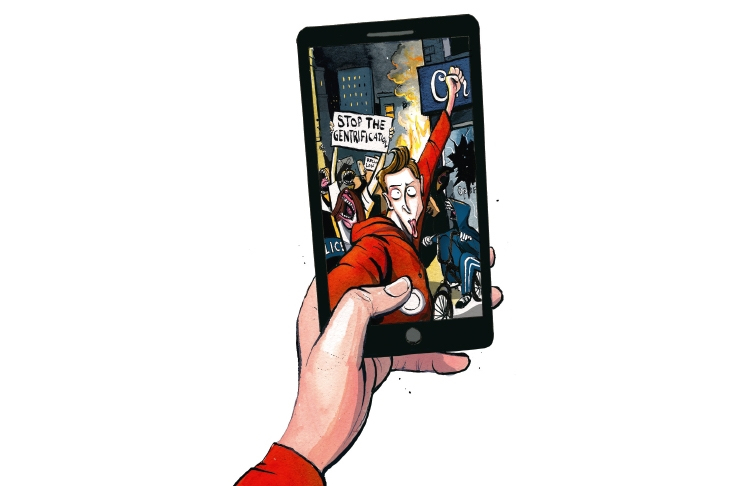






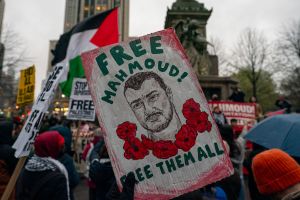

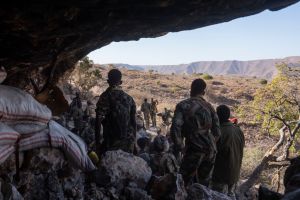


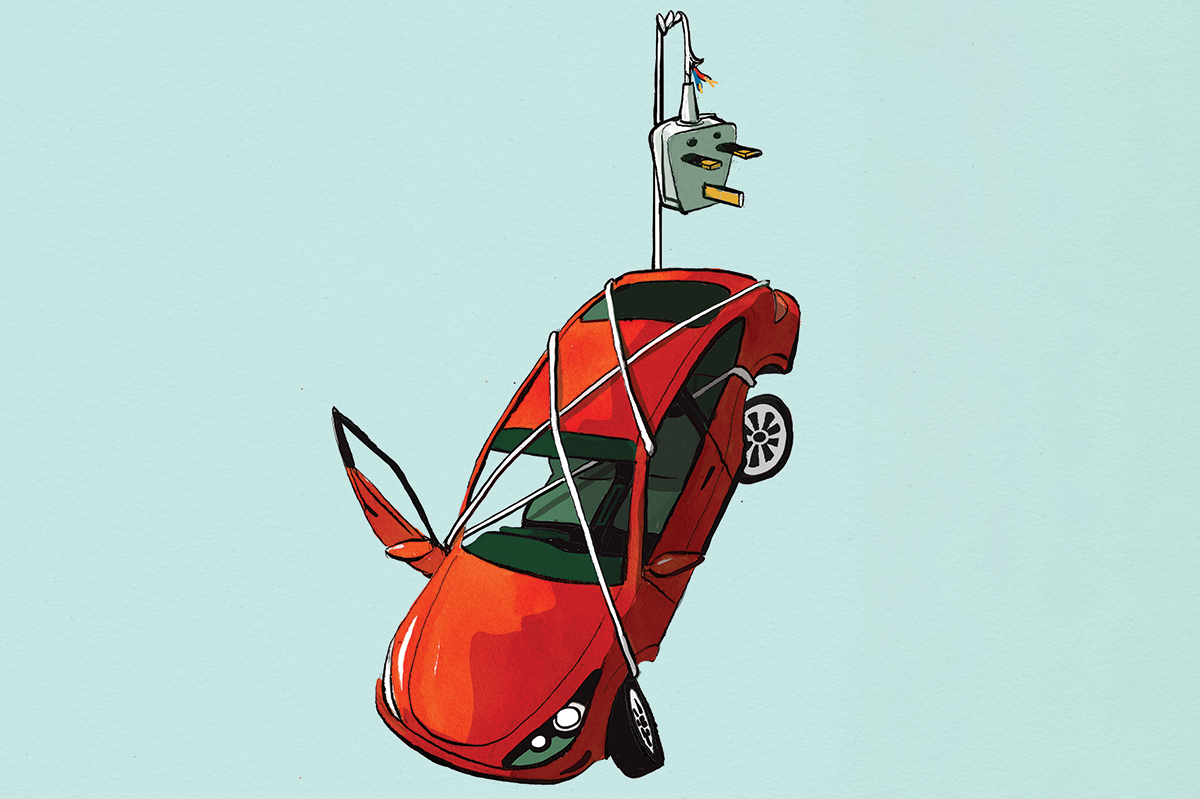
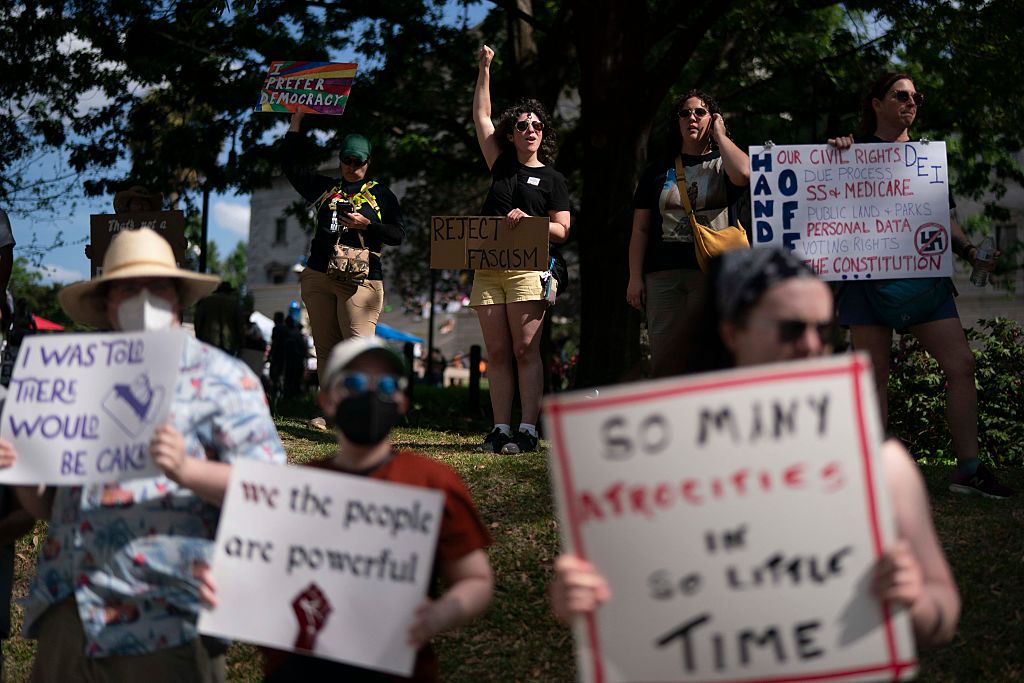

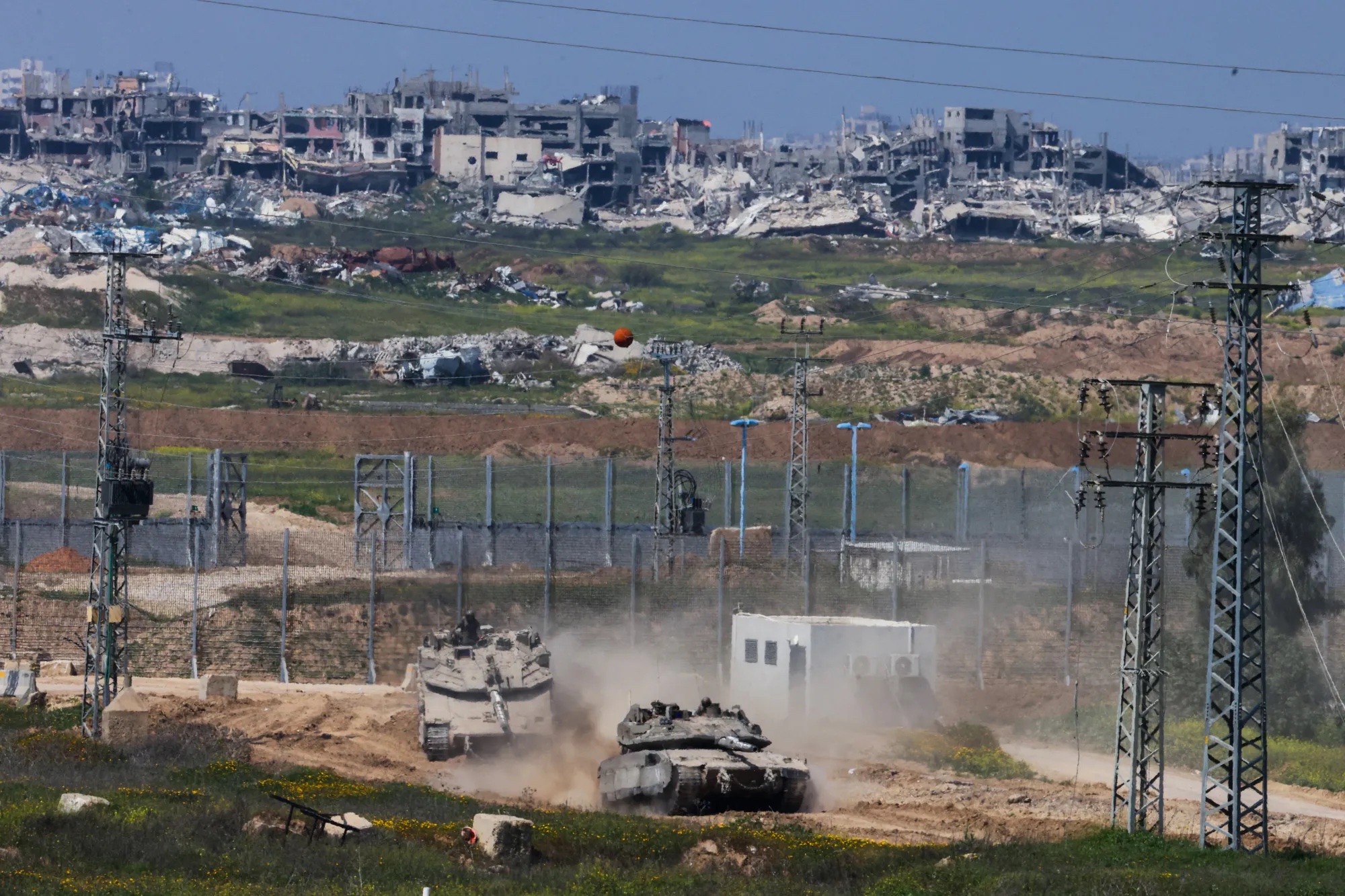







Leave a Reply